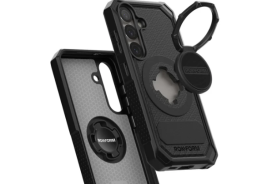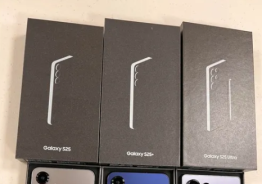Microsoft has officially introduced the next major version of its popular operating system, which is called Windows 10, not Windows 9 as everyone expected.
The company was widely expected to take the wraps off its new OS on Tuesday, Sept. 30, and so it did. Instead of Windows 9, however, which was considered the logical name following the current Windows 8, Microsoft has now announced Windows 10. The move could be seen as a marketing scheme to distance the new OS from the overly criticized Window 8.
"One way to look at it is that Windows is a threshold :-). It's time for a new Windows. This new Windows must be built from the ground-up for a mobile-first, cloud-first world. This new Windows must help our customers be productive in both their digital work and their digital life. This new Windows must empower people and organizations to do great things. That new Windows is Windows 10," Microsoft said in a company blog post.
"Windows 10 represents the first step of a whole new generation of Windows. Windows 10 unlocks new experiences for customers to work, play and connect. Windows 10 embodies what our customers (both consumers and enterprise) demand and what we will deliver.
The new Windows 10 aims to deliver a tailored experience across a wide range of devices and hardware types, which means that the user interface and overall experience on a touch-centric device such as a tablet will be radically different of that of a desktop PC.
At the same time, while the Windows 10 experience will be tailored depending on hardware types, all devices running the OS will coexist on a single application platform. This way, developers will be able to write universal applications for the entire Windows family, and consumers will be able to find all apps in a single store. Moreover, that store will allow consumers to discover, purchase, and update apps across all devices.
Microsoft showed off an early Windows 10 build at its event and the new OS looks quite similar to the popular Windows 7, while also incorporating some elements from Windows 8. According to Microsoft's Joe Belfiore, the familiar look and feel of Windows 10 is absolutely intentional, as the company is trying to make it look easier to transition from Windows 7 to the new OS version. Windows 8 brought drastic changes when it launched a couple of years back, and many consumers were reluctant to make the switch.
Many will also be glad to learn that Windows 10 ditches the infamous "Metro" start screen, opting instead for a series of live tiles in the right side of the Start menu. The left side of the Start menu will have the usual bunch of pinned and frequently-used apps, along with web and app search functions at the bottom. Both the tiles and the Start menu will be resizable, and Microsoft even said that users will be able to expand the menu beyond the parameters of their monitor. More specifically, users will have the ability to scroll left and right to see a comprehensive list of apps and tiles.
An updated taskbar, meanwhile, will sport a new "task view" feature in Windows 10, which will display all apps running across each virtual desktop, while primarily showing the current desktop on screen. Users will be able to add more desktops and switch between them using the thumbnails on the lower portion of the screen.
As expected, Windows 10 also aims to be easy to use on touch-enabled devices, and it will still support touch controls such as the Charms bar. The new OS will also implement some touch features from Windows 8, but Microsoft has not detailed the specifics just yet.
In conclusion, Windows 10 will offer a tailored experience depending on hardware type, and many of the features will depend on device and control setup. On a tablet, for instance, the new OS will start in a manner that's more similar to the Metro UI found on Windows 8, delivering apps in full screen and pulling up a full page of live tiles upon pressing the start button. Hybrid devices and 2-in-1 machines with multiple control schemes, meanwhile, will benefit from Windows 10's Continuum system. A device such as the Microsoft Surface 3, for instance, will run one UI while its keyboard is connected, and enter tablet mode when the keyboard is removed.
The new Windows 10 will formally launch in late 2015 and Microsoft will deliver more details over the course of the year, but so far it looks quite promising.
"This week's announcements are just the first chapter of our conversation with customers about Windows 10 - with a focus on enterprise features (because enterprises have a need to evaluate software early on) and the desktop/laptop experiences," Microsoft further explains in its blog post. "Early in 2015 we'll introduce the consumer chapter and talk much more about other device types and more consumer features. We'll then continue the conversation with the developer chapter at our Build conference, and later in the year we'll release Windows 10 and look forward to some amazing new devices."
The company is also launching an Insider Program starting with Oct. 1, allowing tech-savvy consumers and IT professionals to try out the new OS first hand.
© Copyright 2025 Mobile & Apps, All rights reserved. Do not reproduce without permission.













